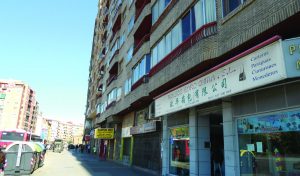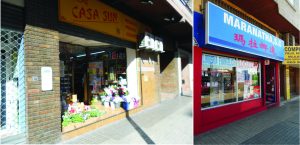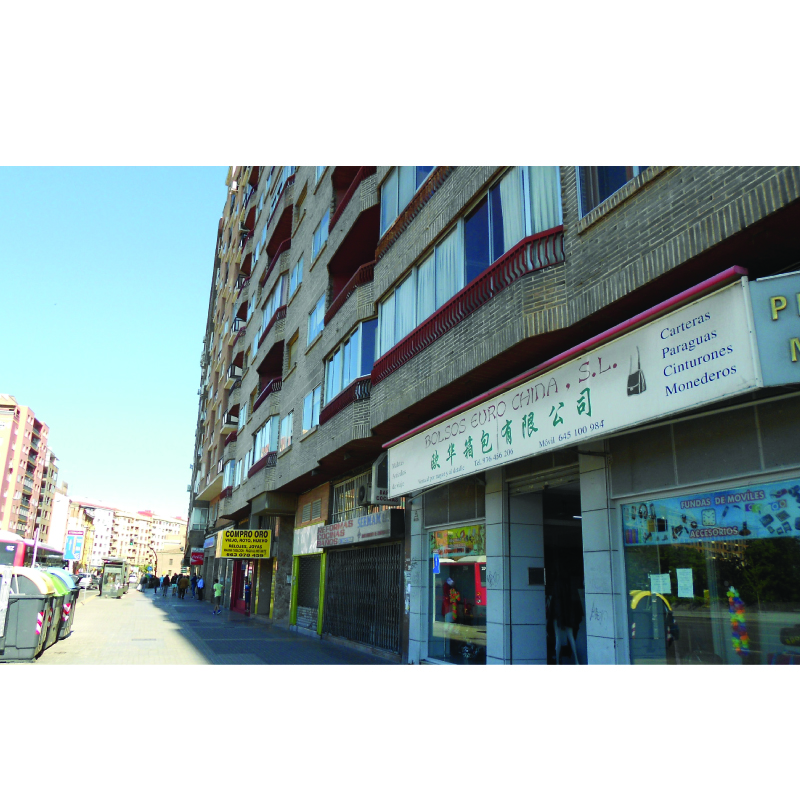
In Spain, there are officially around 200,000 Chinese residents, spread out all over the country but primarily in the main cities and the most vibrant regions. There are 28,800 in Andalucía in the south while out of the 54,432 in Cataluña region, 45,636 are in Barcelona and 54,512 live in Madrid.
Despite the serious economic crisis that befell the country in 2008, the Chinese population has been steadily increasing. From 11,600 Chinese residents in 1998, the number grew to 104,681 in 2006 and reached 199,661 as of Jan. 1, 2016.
Though the 2008 crisis hit Spain hard, it seemed the Chinese entrepreneurs were spared. Chinese arrivals on Spanish soil have not decreased since the crisis, in contrast to other foreign communities, which chose to leave Spain for another European country or return to their home country.
One explanation could be that Chinese businesses are funded through loans tied to an internal solidarity system within the community and is not dependent upon the regular banking system which was responsible for the collapse of other businesses.
The newly arrived Chinese also have more diversified profiles than those who came in the early 2000s: they are mostly students and entrepreneurs who have higher qualifications and skills.
One person out of four is unemployed in Spain. But in the Chinese community, there is no unemployment. The Spanish authorities recorded 40,000 self-employed Chinese, twice more than at the time of the economic crisis.
At the same time, their business activities have evolved: they are no longer confined to just making spring rolls or selling cheap gadgets.
Chinese-owned businesses remain the most visible element of Chinese presence in Spain, in cities and small villages alike. Their commerce shows a well-managed network of distribution, from the warehouse to the small shop. Their activities have diversified into textile retail, import-export companies, media and communication groups.
The formula for success of the Chinese in Spain is one that is common among Chinese overseas: long working hours and the motivation to succeed, particularly migrants who arrived in Spain at the end of the 1990s.
Up to today, 70 to 80 percent of the Chinese community in Spain originates from the province of Zhejiang, specifically the city of Qingtian, which was considered rural and poor. The migrants who came after them were either family members or from the same circle of family relations and followed in the footsteps of their forerunners.
These new migrants like the Spanish lifestyle which they describe as “more free” than in China, and some avail of the opportunity to take up studies or training, or to complete a course.
Recent investments by Chinese companies have brought in professionals who are not from the individual migrations of small entrepreneurs. Chinese companies are beginning to get interested in Spain, after initially investing mainly in France and Germany.
 The preferred sectors of these companies are rather diverse: the energy sector with the Gingko Tree Investment Co.; real estate with the Dalian Wanda Group which has also invested in the professional football club Atlético Madrid; the hospitality sector and tourism.
The preferred sectors of these companies are rather diverse: the energy sector with the Gingko Tree Investment Co.; real estate with the Dalian Wanda Group which has also invested in the professional football club Atlético Madrid; the hospitality sector and tourism.
The Chinese are organized in a variety of associations (evangelical and others). The most influential is the Asociación de Chinos en España founded in 1983 with its headquarters in Madrid.
Chief among its many goals is the defense of the rights of the Chinese living in Spain and the dissemination of Chinese culture.
The association is favored by the Spanish authorities as a representative to discuss concerns with, such as security matters regarding the Chinese community, as was the case in 2014 in Granada.
Chinese presence in Spain has also been made easier by government measures in favor of foreign investors. Since 2013, the government has put in place specific visas for entrepreneurs, known as golden visas: the aim is to attract wealthy foreign investments into the country. So far, the program has generated 2.1 billion euros. Two thirds of the investments have been made in the real estate sector, particularly in Barcelona, Malaga, Madrid and Alicante.

With this special visa, the investor’s family can come to Spain. The visa applies as well to highly-qualified workers.
All in all, there are 27,301 persons covered by this policy. Sixty percent of the visas have been allocated to Russian and Chinese nationals. This type of measure has been extended to other countries of the European Union.
The Chinese presence also shows the revival of Spain’s economy since 2008: their great number in major cities is synonymous to their adaptation to the country’s economic evolution.
Their business activities – restaurants, shoe shops, hair salons, general stores, small convenience stores in villages – are located in targeted districts, the residential working-class districts and their products are affordable.
There are some window shops though, that display a “For Rent” sign, an indication that some businesses have closed. However, import-export companies have taken advantage of the greater integration of the main Spanish cities with regards to the flow of European goods, particularly with the development of the logistics sector.
For instance, the city of Zaragoza took the 2008 World Exposition as an opportunity to revitalize its transport system, its airport and the activity zone adjoining it.
Besides transport firms, IT firms also settled in the airport’s business space. Thanks to the high-speed rail linking Barcelona to San Sebastian, Zaragoza hopes to assert its role as the logistics platform in the northern part of the country.
Spain has a good network of highways covering its entire territory.
The big cities are evidently benefiting from the energized economic vitality of the country. The hinterlands are dynamic regions with a diversity of activities (automobile industry, agribusiness, tourism), and some regions have a port (for example, the port of Algeciras).
The industrial sector relies on a skilled workforce, whose salary has been adjusted based on working hours which is dependent on each production site and not based on each branch of the sector. The Mediterranean and Northern coastal regions have benefited from such dynamism.
This revival of Spain’s economy relies on the willingness of the Spanish workforce to accept very low wages. These people (some did postgraduate studies) who earn less than 1,000 euros per month have been called the mileuristas. The social situation is tense, especially as tens of thousands of young graduates leave Spain to work in Germany or in the UK. Such a situation does not help the country rebuild itself quickly.
Tourism remains one of the key sectors in the country’s economy; Spain is among the top tourist destinations in the world (75.3 million visitors in 2016) with tourists coming mainly from Europe. The British rank first among them (8 million), followed by the Germans (nearly 5 million), then the French (4.6 million).
The many low-cost airlines available has boosted this sector and made Spain accessible from most of the major European cities for a weekend escapade. In the last two years, following the numerous incidents or terrorist attacks in countries such as Tunisia, Turkey and Egypt, visitors have increased in numbers as Spain became a fall back destination that offers a range of attractions combining seaside tourism and a rich cultural heritage.
This is also true for American and Chinese tourists whose choices are the main cities of the country, especially Madrid and Barcelona (a recent target of terrorists last 2017). In 2015, the country welcomed 68 million foreign visitors. In 2016, the figure increased by 10 percent: this helped job creation in hotel and restaurant businesses and in vacation centers.





